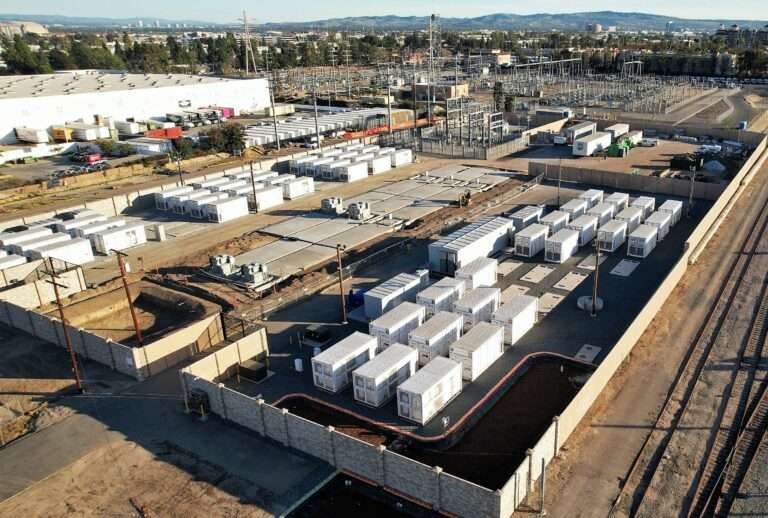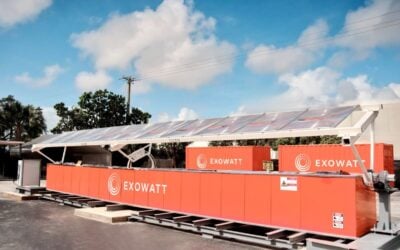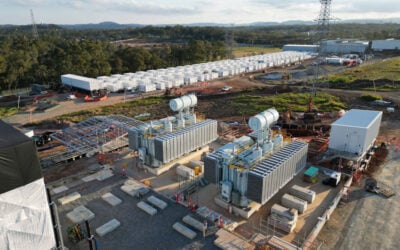
Following in the footsteps of several other US jurisdictions this year, officials at California’s Orange County are one step closer to amending zoning laws to allow the development of BESS.
With public scrutiny of BESS heightened in the wake of the fire at Vistra’s Moss Landing Energy Storage Facility in January, the development of specific zoning standards for the technology has become a hot discussion topic amongst local planning officials across the US.
As reported by Energy-Storage.news, this includes the California County of Solano, which recently drafted its own set of BESS zoning laws.
Orange County develops new standards
With Orange County being California’s third most populous county, its decision to enact an emergency 45-day moratorium on the approval of any new BESS drew huge interest from all corners of the renewable energy industry earlier this year.
Try Premium for just $1
- Full premium access for the first month at only $1
- Converts to an annual rate after 30 days unless cancelled
- Cancel anytime during the trial period
Premium Benefits
- Expert industry analysis and interviews
- Digital access to PV Tech Power journal
- Exclusive event discounts
Or get the full Premium subscription right away
Or continue reading this article for free
Despite enacting the moratorium during January, the county’s planning board has been developing a new set of BESS zoning laws for almost a year now, after it received the go-ahead from the county’s Board of Commissioners to create the new standards in October 2024.
In March of this year, the County extended its initial moratorium by an additional 10 months and 15 days “to allow additional time for staff to consider, study, and assess the various approaches to the regulation of BESS facilities.”
In creating its new BESS zoning standards, the County Planning Commission consulted with a range of stakeholders including Orange County Fire Authority (OCFA), utilities Southern California Edison (SCE) and San Diego Gas & Electric (SDG&E), and unnamed BESS technology manufacturers.
Although the zoning standards aren’t finalised, the most recent draft states that BESS will be allowed in any zoning district throughout the county, except in “very high fire severity areas.”
If visible to the public, BESS projects must be surrounded by a decorated non-scalable solid wall of at least 6-foot in height. For projects hidden from the public eye, the draft ordinance mandates a perimeter 6-foot wall made of tubular steel or wrought iron, as a minimum.
In line with other jurisdictions that are in the process of adopting new zoning standards, such as California’s San Diego County, BESS projects destined for Orange County must be located at least 100 feet from residential and community facilities.
In terms of fire mitigation measures, Orange County chose not to create its own set of standards and instead will require developers to follow regulations as set out within the California Fire Code (CFC).
When it comes to the deployment of lithium-ion batteries, the CFC takes guidance largely from the National Fire Protection Association (NFPA), namely its Standard NFPA 855. These guidelines from the NFPA for the deployment of stationary BESS are released every three years, with the next set due to be issued sometime next year.
Orange County’s new standards will also require developers to produce a decommissioning plan prior to use permit issuance and inform the county of any ownership changes.
A public hearing on Orange County’s new zoning standards for BESS is scheduled for 10 September 2025.
New zoning laws apply to unincorporated areas of county only
In a recent report published alongside the proposed zoning ordinance, the planning commission highlighted the high volume of public comments it had already received regarding a BESS facility destined for the incorporated City of San Juan Capistrano, located in Orange County.
As regular readers of Energy-Storage.news will be aware, this particular project is a 250MW standalone BESS proposal from French multinational energy company Engie known as Compass Energy Storage.
The planning commission noted that with the new zoning laws only applying to proposals destined for unincorporated areas of the county, Engie’s BESS proposal would remain unaffected.
The project is currently being assessed by the California Energy Commission (CEC) as part of its opt-in certification scheme, with the public engagement phase of the process thoroughly underway.
As recently reported by Energy-Storage.news, the state regulator has already held two public information meetings that drew huge interest from the public. In terms of a current approval timeline, the CEC is in the process of producing a draft environmental impact report for the project which is scheduled for publication towards the end of September.
After another public comment period, the CEC will publish a final environmental impact report by the end of the year ahead of its final decision that’s required before 1 January 2026.





